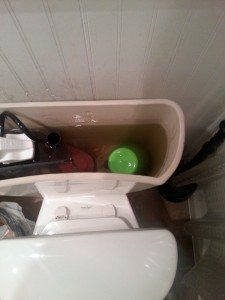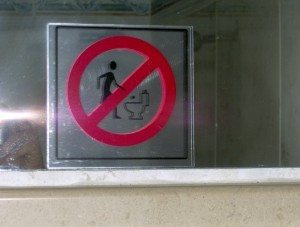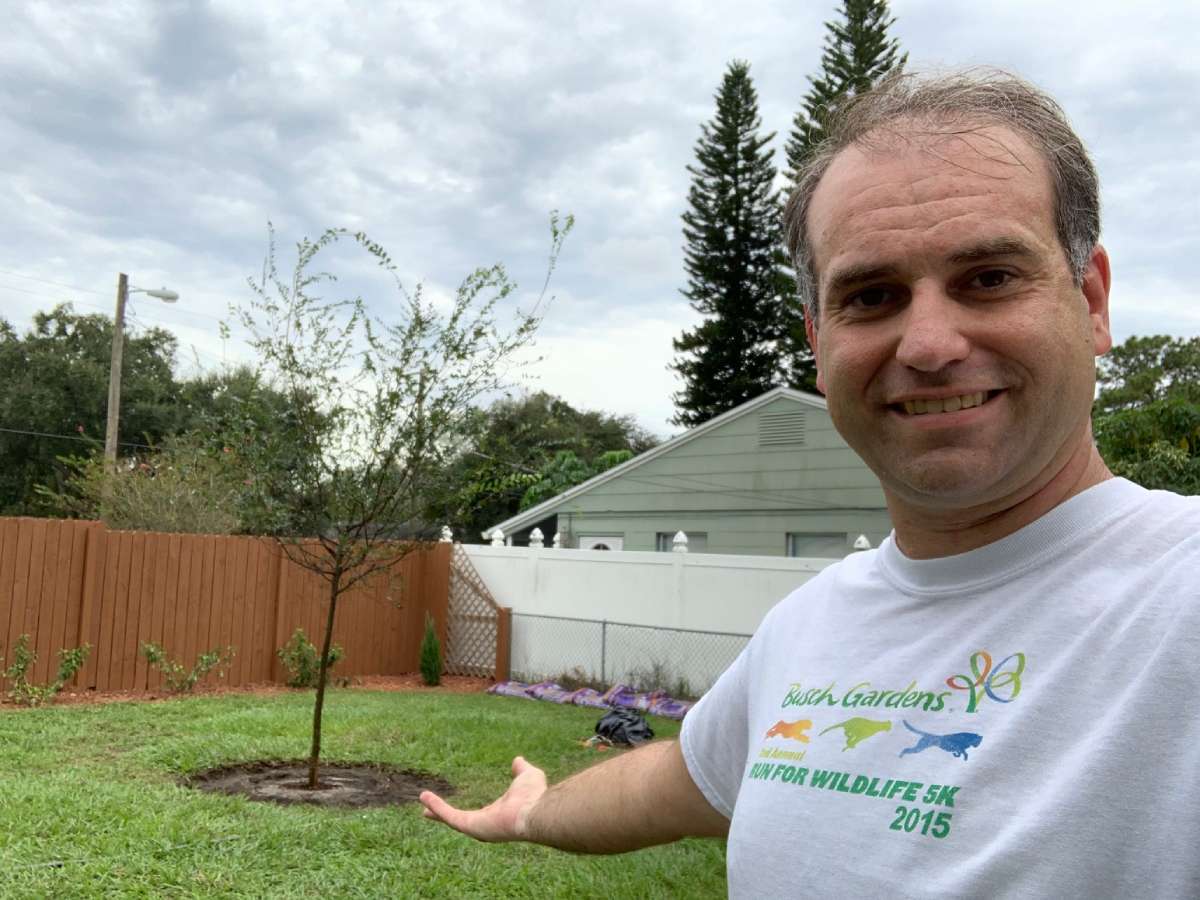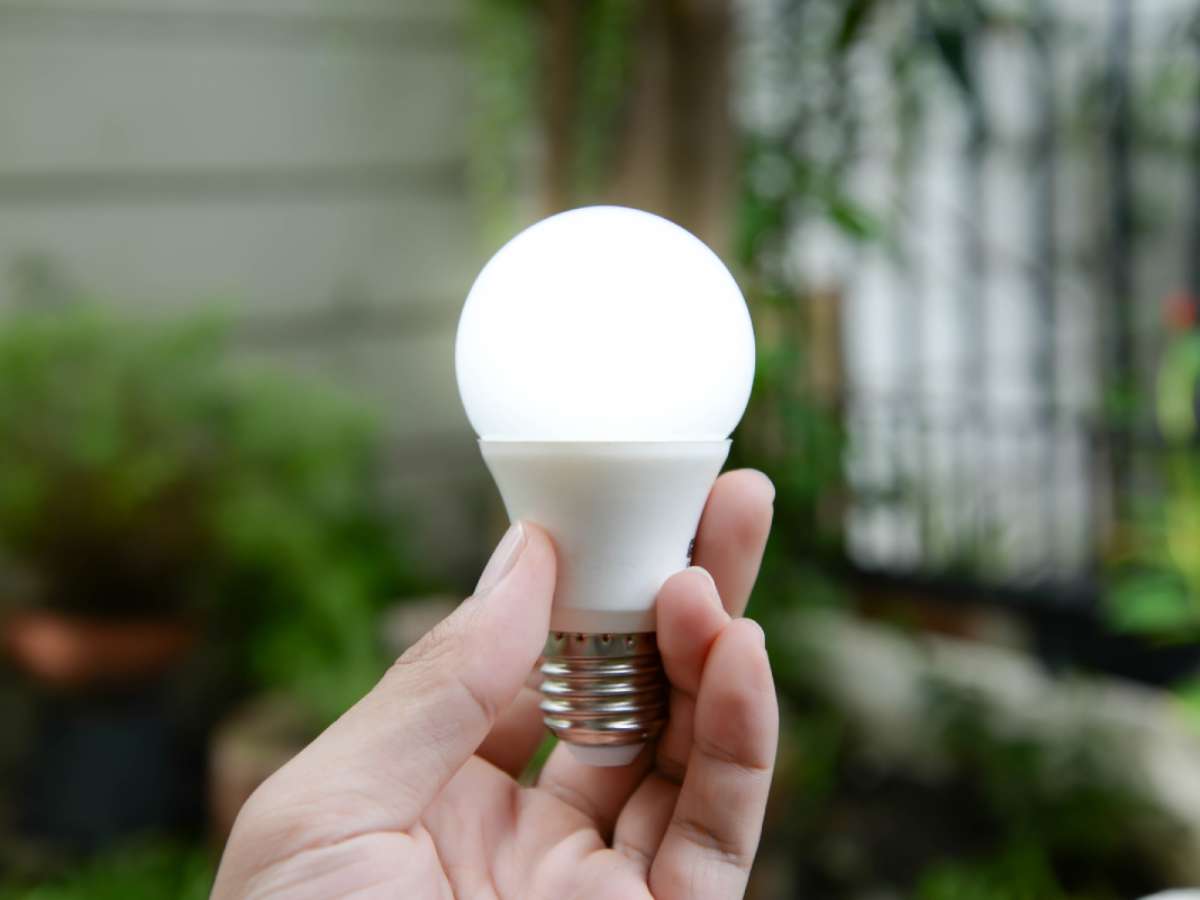 If you were to ask someone back in the day the best way to conserve water in the bathroom, the most common answer would probably be: “Turn off the faucet when you’re brushing your teeth!”
If you were to ask someone back in the day the best way to conserve water in the bathroom, the most common answer would probably be: “Turn off the faucet when you’re brushing your teeth!”
And yes, that’s true – we waste tons of water if we let the faucet run while we’re scrubbing our pearly whites.
At the same time, there are even more ways to cut back on our H2O usage and conserve water, energy, and cash all at the same time.
Although these are not technically brand-new ideas, not many people have ever thought about them, much less adopted them as habit.
So, without further ado, let’s start a new trend by spreading the word about 3 of my top (100% DIY!) ways to wave goodbye to wasted water.
#1 – Displace Space in the Toilet Tank
You can see that I’ve employed my trusty green cup in my toilet at home, but this little trick can be accomplished with any water insoluble item that you can fit into your toilet tank.
Try a brick, empty milk jug, plastic bottle, or cup — whatever. The point is to take up as much space as reasonably possible in the tank so that your toilet has less water to flush and refill with each use.
Alternatively, you could simply lower the float adjustment on the fill valve to accomplish the same thing.
#2 – Don’t Toss Trash in the Toilet
Speaking of flushes, every time you push down the handle you use water. So make sure you’re only flushing when you actually need to.
Believe it or not, this little contraption was not invented to double as a trash can so don’t treat it like one. Every time you need to throw away tissues, paper towels and random debris, choose the can… not “the can.”
Besides, tissues and paper towels don’t break down quickly like toilet paper does, so using the toilet as a trash can will eventually cause a plumber to stop by.
#3 – Collect Water While It’s Heating Up
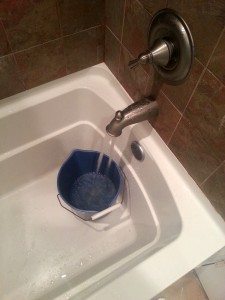 If you’re like most people, you’ve probably never considered how much water just runs down the drain in your tub when you’re heating the water for your shower.
If you’re like most people, you’ve probably never considered how much water just runs down the drain in your tub when you’re heating the water for your shower.
The good news is that knowledge is power, so you can do something about it now!
Keep a bucket beside your bathtub and place it under the faucet when you’re getting ready to take a shower. This way, you can collect the majority of the cold water that would otherwise go to waste and put it to good use instead.
Once the water starts to heat up, put the bucket aside for use in your garden or to water your potted plants and flowers.
If you don’t have any greenery – and assuming you’re using a clean bucket and not your cleaning bucket – you could also use the collected water:
- For your morning coffee: Pour the water into your coffee maker and close the lid. When you wake up (provided of course, that you’ve also already added the grinds), all you have to do is push “Start” and you’re ready to go!
- For cooking: Fill a pot for pasta, vegetables like potatoes, etc. As long as you cover the pot and you eventually end up boiling the water, you can let it sit on the stove overnight with no worries.
- For laundry (for top-load washers/hand-washing only): Dump the cold water into your washer when you’re doing laundry to help your washing machine fill up faster, thereby using less additional water in the process.
- For Fido and Fluffy (my personal fave): Dogs and cats aren’t so picky when it comes to their drinking water (although they may actually prefer the toilet), so use it to give your pet’s water station a quick refill after your shower.
Now that I’ve shared some of my favorite tips and tricks with you, how about a little reciprocity:
What are your secrets for saving water?
Chris Long is a store associate at a Home Depot in the Chicago suburbs. He has been helping customers since 2000 and has interests in bathroom and water topics ranging from bathroom sinks to medicine cabinets.

